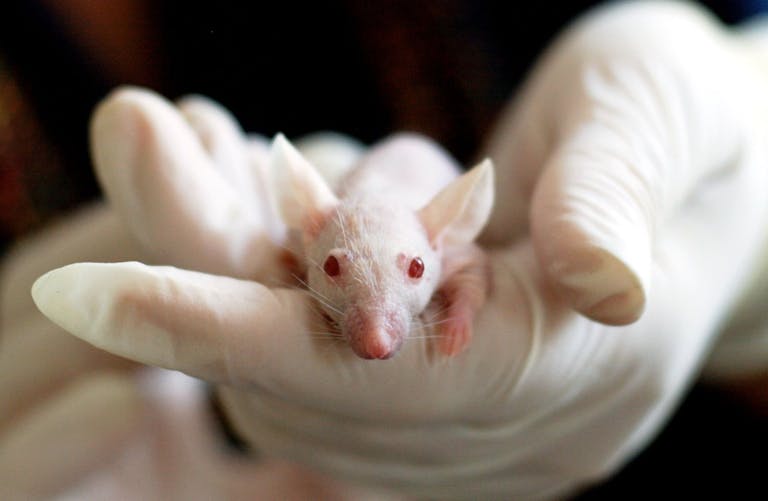Scientists Discover a Protein That Literally Punches Holes in the Heart After a Heart Attack

Researchers at Massachusetts General Hospital (MGH) have uncovered a remarkable and unsettling new mechanism behind one of the deadliest complications of heart attacks. Their findings, published in Science on September 4, 2025, reveal that a protein made by the body’s immune cells—intended to defend against infection—can actually damage the heart itself after a myocardial infarction (MI).
The culprit is a protein known as Resistin-like molecule gamma (RELMγ), or RELMy for short. This molecule, produced by neutrophils (a type of white blood cell), literally punches holes in heart muscle cells after a heart attack. The result? Dangerous heart rhythm disturbances known as ventricular tachycardia (VT) and ventricular fibrillation (VF)—both of which can cause sudden cardiac death within minutes.
Let’s break down what this means, what the scientists actually discovered, and why it matters for future heart attack treatments.
The Research in Detail
The study, titled “Resistin-like molecule γ attacks cardiomyocyte membranes and promotes ventricular tachycardia,” was led by Dr. Nina Kumowski, with Dr. Matthias Nahrendorf as senior author, both from MGH’s Center for Systems Biology. Their goal was to understand how the immune system—which is supposed to help the body recover—might instead make things worse for the heart after an attack.
After a heart attack, blood flow to part of the heart muscle is blocked, cutting off oxygen. This causes cells in the affected region (called the infarct) to die. The body responds by sending immune cells to clean up the damage and start repair. But this inflammation can be a double-edged sword.
Using a combination of mouse models, genetic analysis, and microscopy, the researchers found that neutrophils that rush into the damaged heart tissue start producing large amounts of RELMγ. This protein, encoded by the Retnlg gene in mice, acts as a kind of molecular weapon. It binds to the membranes of nearby cardiomyocytes (heart muscle cells) and forms tiny pores, breaking the cells’ protective barrier.
The result is catastrophic on a microscopic level—ions like calcium and sodium leak through these holes, disrupting the delicate electrical balance that keeps the heart beating rhythmically. Once this balance is disturbed, arrhythmias such as VT (a very fast but coordinated rhythm) and VF (a chaotic and uncoordinated rhythm) can occur.
Both are medical emergencies: VT can quickly progress to VF, and VF can stop the heart entirely.
A 12-Fold Reduction in Arrhythmias
To confirm that RELMγ was the culprit, the researchers genetically modified mice so that their neutrophils could no longer produce this protein. The results were dramatic: after inducing a heart attack, these mice experienced a 12-fold reduction in arrhythmia events compared to normal mice.
This finding suggests that blocking RELMγ could be a powerful way to reduce the risk of fatal arrhythmias after a heart attack.
Interestingly, the team also analyzed human heart tissue from patients who had suffered myocardial infarction and found that the human equivalent gene, RETN (Resistin), showed elevated expression in the damaged tissue. This means the same phenomenon likely occurs in people, not just mice.
The Broader Implications
This discovery shifts how scientists think about post-heart attack complications. For decades, cardiologists have known that arrhythmias are a leading cause of sudden death after MI, especially in the first 48 hours. Traditionally, the focus has been on oxygen deprivation, scar formation, and electrical remodeling of the heart tissue.
But now, we know that immune cells themselves can directly trigger arrhythmias. That’s a major shift in understanding.
If the body’s own defense proteins are damaging the heart, treatments could target those molecules to protect patients. However, there’s a catch: the immune system plays many essential roles, and broadly suppressing it could make things worse. So the challenge is finding a way to neutralize RELMγ (or its human counterpart Resistin) without shutting down the immune response entirely.
How the Study Was Done
The MGH team used a variety of advanced techniques to pinpoint the mechanism:
- Single-cell and spatial RNA sequencing allowed them to identify which genes were activated in neutrophils after MI.
- Microscopy, including confocal and super-resolution imaging, helped them visualize RELMγ molecules binding to and damaging heart cell membranes.
- Liposome models and cell cultures were used to test whether RELMγ and human Resistin behaved the same way, and indeed they did.
- In vivo experiments in genetically engineered mice confirmed that removing RELMγ from immune cells drastically reduced arrhythmia burden.
These methods provided a multi-level confirmation—from gene expression to actual functional damage—making the results robust.
What Are Ventricular Tachycardia and Ventricular Fibrillation?
Since these terms come up so often, it’s worth understanding what they mean.
Ventricular Tachycardia (VT) is a condition where the heart’s lower chambers (ventricles) start beating extremely fast—sometimes over 200 beats per minute. The rhythm, although rapid, remains somewhat organized. This means the heart still pumps blood, but inefficiently.
Ventricular Fibrillation (VF), on the other hand, is when the electrical signals in the ventricles become completely chaotic. The heart stops pumping effectively, leading to sudden cardiac arrest. Unless treated immediately—usually with defibrillation—VF is fatal within minutes.
These two conditions often appear within 48 hours after a heart attack, precisely when neutrophil infiltration peaks. The new findings suggest this timing may not be coincidental at all.
Why Would the Immune System Do This?
At first glance, it’s puzzling—why would our immune system create a protein that harms our heart?
The answer lies in what RELMγ is supposed to do. In other contexts, RELMγ and related proteins (part of the resistin-like molecule family) help immune cells attack microbes by damaging their cell membranes. Essentially, they function like a natural antibiotic, poking holes in bacterial walls.
But after a heart attack, when immune cells flood into the injured tissue, these same proteins have no microbes to fight. Instead, they can mistakenly target nearby heart cells, causing collateral damage. It’s a tragic case of the body’s own defenses going rogue.
Next Steps: Turning Discovery into Treatment
According to Dr. Nahrendorf’s group, the next logical step is to develop strategies to block or neutralize RELMγ and see whether that reduces both the size of the infarct and the frequency of arrhythmias.
This would begin in animal models and then, if successful, move toward clinical studies in humans. Researchers will also need to determine whether Resistin, the human version, behaves identically to RELMγ and whether its presence in the blood can predict arrhythmia risk.
The hope is that someday, doctors could measure Resistin levels in patients after a heart attack and use that information to tailor treatment—either through targeted drugs or antibodies that block the protein’s harmful effects.
Funding and Collaborations
This research was supported by numerous international organizations, including:
- The Leducq Foundation
- National Institutes of Health (NIH) — Grants HL155097, HL149647, HL142494, HL176359, NS136068, and DP2AR075321
- Deutsche Forschungsgemeinschaft (DFG) Walter Benjamin Program — Grants 491497342 and 530157297
- British Heart Foundation — Grants FS/ICRF/24/26111 and RE/18/3/342140
- NIHR Oxford Biomedical Research Centre
Several researchers disclosed financial relationships with biotech and pharmaceutical companies such as Alnylam, Biogen, Novartis, Pfizer, AstraZeneca, Medtronic, and others. These disclosures were included transparently in the publication.
The Bigger Picture: Immune Cells and the Heart
This study fits into a growing field of research exploring the intersection between the immune system and cardiovascular disease. Traditionally, heart attacks have been seen purely as a problem of blocked arteries and oxygen deprivation, but recent discoveries have shown that inflammation plays a massive role in both the injury and the recovery process.
Neutrophils are among the first responders to any injury, rushing in to destroy bacteria and remove dead tissue. But their aggressive nature can backfire in delicate organs like the heart. The balance between repair and damage is razor-thin, and molecules like RELMγ show just how easily it can tilt the wrong way.
Future heart attack therapies may not only focus on reopening arteries and stabilizing rhythms but also on fine-tuning immune responses—encouraging healing while preventing harmful overreaction.
A Step Toward Preventing Sudden Cardiac Death
Every year, millions of people worldwide suffer heart attacks, and a significant percentage of them die not from the initial blockage but from post-infarction arrhythmias. Understanding the precise biological triggers behind these rhythm disturbances is crucial for saving lives.
The discovery that a single immune-derived protein can directly cause arrhythmia by perforating heart cells is one of the most striking findings in recent cardiovascular research. If scientists can safely block RELMγ or its human analog, we might finally have a way to prevent many of those sudden, tragic deaths that occur right after a heart attack.
It’s a vivid reminder that even the body’s own defenses can become its greatest threat when they lose control.
Research Reference:
Resistin-like molecule γ attacks cardiomyocyte membranes and promotes ventricular tachycardia — Science, 2025





